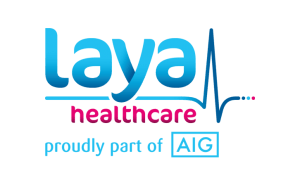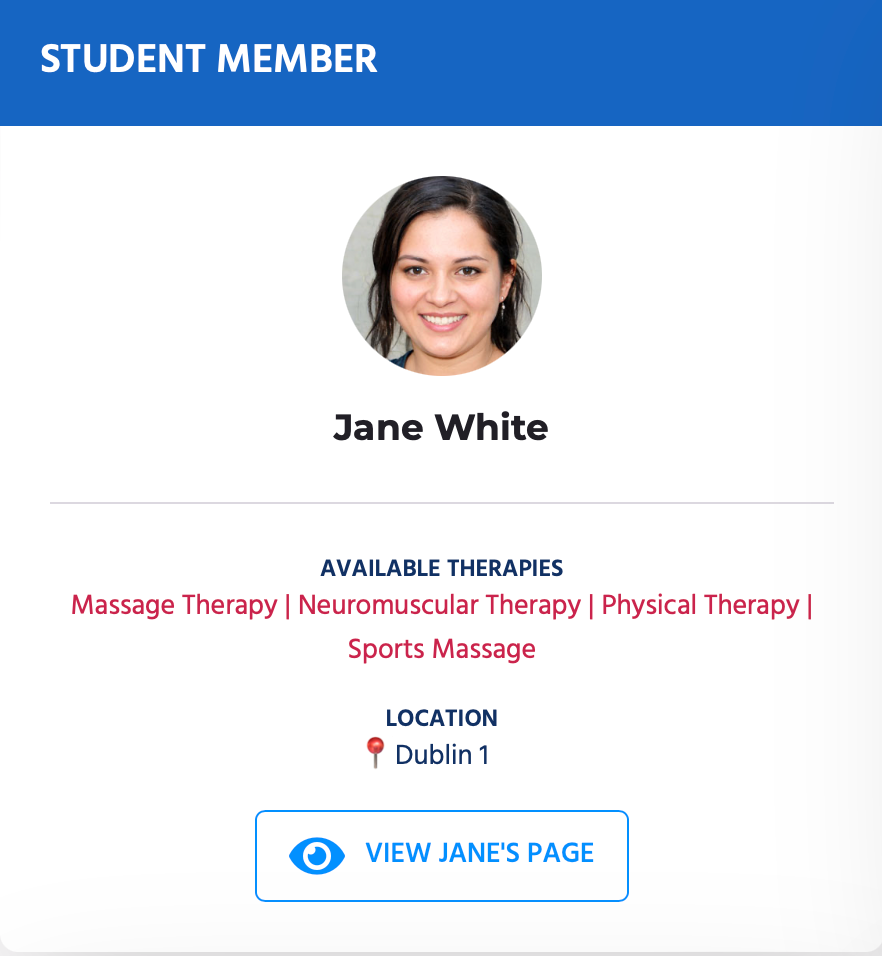The ANMT is established to protect and enhance the rights and privileges of practicing therapies including, but not limited to:
The Association exists to:



Neuromuscular therapy (NMT) is a precise, thorough examination and treatment of the body’s soft tissues using regionally oriented protocols and techniques which are built upon a science-based foundation and guided by clinical evidence.
NMT is highly effective for clients who present with chronic pain and is often successful in reducing or eliminating even longstanding painful conditions. Some of the techniques can also be applied to acute injuries and for post-surgical care; many help to improve performance in sport or dance and to prevent injuries due to these activities.
NMT assessments and examinations primarily address
There is constant consideration for many other perpetuating factors, such as hydration, nutrition, breathing patterns, and psychologic stress.
Advanced Neuromuscular Therapy covers all the same treatment options as Neuromuscular Therapy but also offers advanced treatment methodologies and areas including:
Sports massage is a form of bodywork geared toward participants in athletics. It is used to help prevent injuries, to prepare the body for athletic activity and maintain it in optimal condition, and to help athletes recover from workouts and injuries.
Sports massage has three basic forms: pre-event massage, post-event massage, and maintenance massage.
Sports massage is generally carried out at least once a week as a regular part of athletic training programs, although professional athletes who have their own therapists may have maintenance massage daily. Maintenance massage increases the flow of blood and nutrients to the muscles. It also keeps the tissues loose so that different layers of muscle slide easily over each other. Maintenance sports massage also helps reduce the development of scar tissue while increasing flexibility and range of motion.
The goal of all sports massage is to maximize athletic performance. Athletes in different sports will concentrate the massage on different parts of the body.
Conditions that generally respond well to sports massage include:
Massage Therapy is a hands-on soft tissue manipulation offered as a natural health care modality. Therapists while being science based are knowledgeable and intuitive.
Massage therapy is both an art and a science where the client has the satisfaction of receiving both physical and compassionate care providing relaxation, reduced muscle tension, relief from pain an enhanced overall sense of emotional and physical well-being. Massage therapy offers a wide range of specialities from Oncology massage and Holistic massage and many other varieties all with a strong focus on promoting healing.
Frequency Specific Microcurrent (FSM) has changed what is possible in pain management. FSM can treat chronic myofascial pain quickly, easily and comfortably. Nerve pain from nerve traction injuries, disc bulges, herniations and shingles can be treated successfully by FSM practitioners. There are protocols for kidney stone pain, disc and facet joint generated pain that give rapid and often lasting relief. The protocol for fibromyalgia associated with neck trauma offers pain relief, unprecedented changes in inflammatory cytokines and hope for the millions patients who suffer from this condition.
Doctors, physical and occupational therapists, physiotherapists, chiropractors, osteopaths, acupuncturists, nurses and massage therapists have been using FSM over the past few years to successfully treat scar tissue, tendonitis, ligament injuries, nerve pain, fractures, peripheral neuropathies, chronic fatigue, irritable bowel syndrome and many other medical conditions associated with inflammation.
Frequency Specific Microcurrent (FSM) uses a device which has two independent channels that allow the therapist to set both the frequency and the current independently for each channel. Frequencies are measured in hertz or pulses per second. The frequencies are used on two channels and it makes a difference what channel you put which frequency on. The frequency thought to neutralise the condition is put on Precision channel A or on the channel that fires first. The frequency thought to address the tissue is put on channel B. There are frequencies for over 200 conditions from very common conditions like inflammation and scar tissue and mineral deposits and toxicity to very unusual and hard to document conditions. There are a few frequencies that are used as A/B pairs. A is not a condition, B is not a tissue but the combination of the two frequencies has the therapeutic effect. There is one such frequency combination that takes away shingles pain. When it is used before the blisters break out for an hour a day for three days, the pain is gone in 20 minutes and the blisters never break out. When it is used after the blisters break out it takes the pain away and shortens the course of the shingles. Shingles is the only thing this specific frequency is good for and so far there is no one it has not worked on.
Myofascial Triggerpoint Needling is a technique for the treatment of pain and movement impairments. The technique uses a “dry”needle, one without medication or injection, inserted through the skin into areas of the muscle.
Myofascial Triggerpoint Needling is not acupuncture, a practice based on traditional Chinese medicine and performed by acupuncturists. Dry needling is a part of modern Western medicine principles, and supported by research.
What is a Trigger Point?
A trigger point is a taut band of skeletal muscle located within a larger muscle group. Trigger points can be tender to the touch, and touching a trigger point may cause pain to other parts of the body.
What Kind of Needles Are Used?
Dry needling involves a thin filiform needle that penetrates the skin and stimulates underlying myofascial trigger points and muscular and connective tissues. The needle allows a therapist to target tissues that are not manually palpable.
The therapist wears gloves and appropriate personal protective equipment (PPE) when dry needling, consistent with standard precautions for infection prevention. The sterile needles are disposed of in a medical sharps collector.
Why Myofascial Triggerpoint Needling ?
In cases when dry needling is used by a therapist, it is typically one technique that’s part of a larger treatment plan. Therapists use dry needling with the goal of releasing or inactivating trigger points to relieve pain or improve range of motion. Preliminary research supports that dry needling improves pain control, reduces muscle tension, and normalises dysfunctions of the motor end plates, the sites at which nerve impulses are transmitted to muscles. This can help speed up the patient’s return to active rehabilitation.
As part of their education, therapists are well educated in anatomy and therapeutic treatment of the body. Therapists who perform dry needling supplement that knowledge by obtaining specific postgraduate education and training. When choosing a therapist for dry needling treatment, be sure to ask about their specific experience and education. You can be confident that all therapists listed on the ANMT website for Myofascial Triggerpoint Needling have completed approved training.
Acupuncture is a form of treatment that involves inserting very thin needles through a person’s skin at specific points on the body, to various depths. This, it is claimed, can help boost wellbeing and may cure some illnesses.
In 2003, the World Health Organization (WHO) listed a number of conditions in which they say acupuncture has been proven effective. These include:
Since January 2018 the title ‘Physical Therapist’ has been protected and is administered for the exclusive use of Physiotherapists by CORU.
CORU is Ireland’s multi-profession health regulator.
Their role is to protect the public by promoting high standards of professional conduct, education, training and competence through statutory registration of health and social care professionals.
CORU was set up under the Health and Social Care Professionals Act 2005 (as amended)
It is made up of the Health and Social Care Professionals Council and the Registration Boards, one for each profession named in our Act.
The professions to be regulated are:
CORU currently has registers open for the following professions:
The ANMT warmly welcomed the decision made by the (then) Minister for Health Leo Varadkar to protect the title ‘Physical Therapist’ under section 95(3) of the Health and Social Care Professionals Act 2005.
Since January 2018, only physiotherapists are legally allowed to identify themselves as a physical therapist. It was widely accepted from the outset of the establishment of the National Forum For Complementary Medical Therapies (established by the Department of Health and Children under the auspices of the then minister Micheál Martin) that this title would, in time, be protected along with a number of other specialties.
Neuromuscular Therapists can continue to feel confident in providing therapies to their patients/clients and in playing a lead role in the future of complementary medical therapy in Ireland as Neuromuscular Therapy moves towards state regulation. Patients who are actively seeking a professional therapist specialising in myofascial and chronic pain, rather than a professional trained to work in the hospital setting, will now have any misunderstanding that may have existed removed.
ANMT and NTC will continue to work within the National Forum to secure state registration for Neuromuscular Therapists at the appropriate time. ANMT membership protects our members’ best interests and, in turn, protects the interests of the general public.
We have been, and will continue to stay, in communication with the relevant authorities, and we look forward to any new developments that will benefit both our members and the general public into the future.